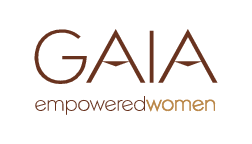Why the Price Is the Price
Hi GAIA friends... Paula, here!
As you may already know, we like to pull the curtain back a little bit on how we do things. From a behind-the-scenes look at visiting one of our refugee artisans to a peek at our design process, I love sharing with our friends and customers just what goes into the products we sell.
Sometimes we’re asked why GAIA accessories cost what they do. After all, if we’re not using semiprecious stones or exotic leather, why the heck do our earrings and handbags cost upward of $100? In the age of fast fashion — and, listen, I occasionally like a cute $35 Zara top as much as the next gal — we’re all accustomed to clothing and accessories being really inexpensive.
However, inexpensive often equates to 2 things: 1) the materials used are of a lower quality and/or 2) the person making the item is not being paid fairly for his or her work. That is what sets GAIA, and other like-minded ethical brands, apart. Let me break it down.
For starters — and this is the most important part — GAIA pays our refugee artisans a living wage for their work. This is a core component of our mission statement. Minimum wage in Texas, where we are based, is $7.25 per hour. The living wage for a family of four in our area (that’s two working adults and two children), according to MIT’s Living Wage Calculator, is more than twice that. It’s $14.69 per hour, to be exact, which is why GAIA pays our artisans on average $15 per hour. How does that compare with other countries? A 2014 Bloomberg news article puts the average manufacturing wage in China at the U.S. equivalent of $3.52. In India, it’s just 92¢.
A large portion of the fabrics we use are artisan-made and/or vintage textiles of the highest quality. We also source eco-friendly organic cotton or hemp textiles, which can be a bit more expensive. Because most of the fabrics are extremely limited in quantity, we try not to waste an inch, which is why you might sometimes see an earring or a beaded necklace echo a pattern from a pouch or a bag. This is one way we keep costs down. In addition, we constantly strive to source our materials from ethical, fair trade vendors. For example, it took us a good while to find the right source for the brushed brass rings on our Cha Cha and Tote bags. Finally, we discovered Matr Boomie, which empowers 20,000 women and minorities in 40 communities throughout India.

And then there’s the matter of wholesale, which is often not something a retail customer considers. About 70 percent of our business is selling to other businesses — retail stores that purchase a large volume of our product at a discounted wholesale price, then mark it up to sell to their customers. We love our wholesale accounts because they order so many items at once, providing significant income to our refugee artisans in a single transaction! However, because we want to keep our final retail prices more attainable, our wholesale margins on most of our products are way lower than most other fashion companies. In fact, if we were exclusively a wholesaler, we wouldn’t survive on our margins. We would have to increase our wholesale prices, resulting in an increase in the final retail price to the customer. Instead, we choose to keep our final retail prices on the more reasonable side and count on the profit margins through GAIA items sold on our website to offset our lower wholesale margins.
I hope that makes sense.
And I hope that the graphic below makes it easy to understand the costs that go into one of our products and why. Our Embroidered Earrings retail for $110, but we wholesale them for half of that at $55, so our profitability is mostly based on the lower number. You can see that though a price might seem like a lot, it’s actually not, considering all of the costs it must cover!

So, in a nutshell, charging less for our product would mean lowering our refugee artisans’ wages, which would essentially change our entire business model. The GAIA support staff is definitely not getting rich doing this work and they graciously accept lower wages than they might earn elsewhere (I personally have not taken a salary yet) in exchange for the meaningful, rewarding, and life-changing work we do on behalf of those in need.
Providing living-wage employment to refugees is why GAIA exists, and for us to change that would compromise our core mission. It is my hope that providing this window into in our costs and pricing will not only help you feel even better about your GAIA purchases, but that it might also encourage you to reflect on your buying power as a whole and to be more intentional in how and where you shop.
Know that when you make a GAIA purchase, you are purchasing something touched by real hands, by real women who have endured atrocities unfathomable to most of us. Know that you are helping to restore their dignity, creating the opportunity to rewrite their stories. Yes, you are adding something beautiful to your wardrobe — but you are doing so very much more!



Comments on this post (1)
This is amazing to know! I definitely see the value in all of your products.
— Annie